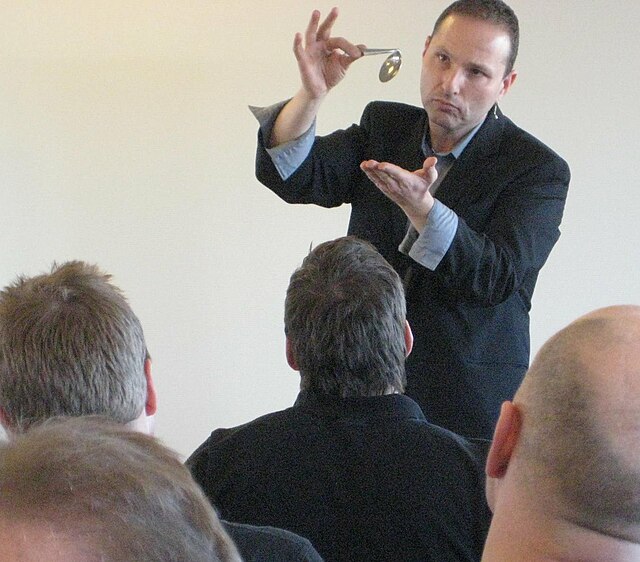Spoon bending is the deformation of objects, especially metal cutlery, purportedly by paranormal means. It is a common theme for magic tricks, which use a variety of methods to produce the effect. Performers commonly use misdirection to draw their audience's attention away while the spoon is manually bent. Another method uses a metal spoon that has been prepared by repeatedly bending the spoon back and forth, weakening the material. Applying light pressure will then cause it to bend or break.
Guy Bavli demonstrates spoon bending in Denmark in 2010
Psychologist Ray Hyman demonstrating Geller's spoon bending feats at a Center for Inquiry lecture in 2012
Paranormal events are purported phenomena described in popular culture, folk, and other non-scientific bodies of knowledge, whose existence within these contexts is described as being beyond the scope of normal scientific understanding. Notable paranormal beliefs include those that pertain to extrasensory perception, spiritualism and the pseudosciences of ghost hunting, cryptozoology, and ufology.
Charles Fort, 1920. Fort is perhaps the most widely known collector of paranormal stories.
James Randi was a well-known investigator of paranormal claims.
Chris French founder of the Anomalistic Psychology Research Unit.





